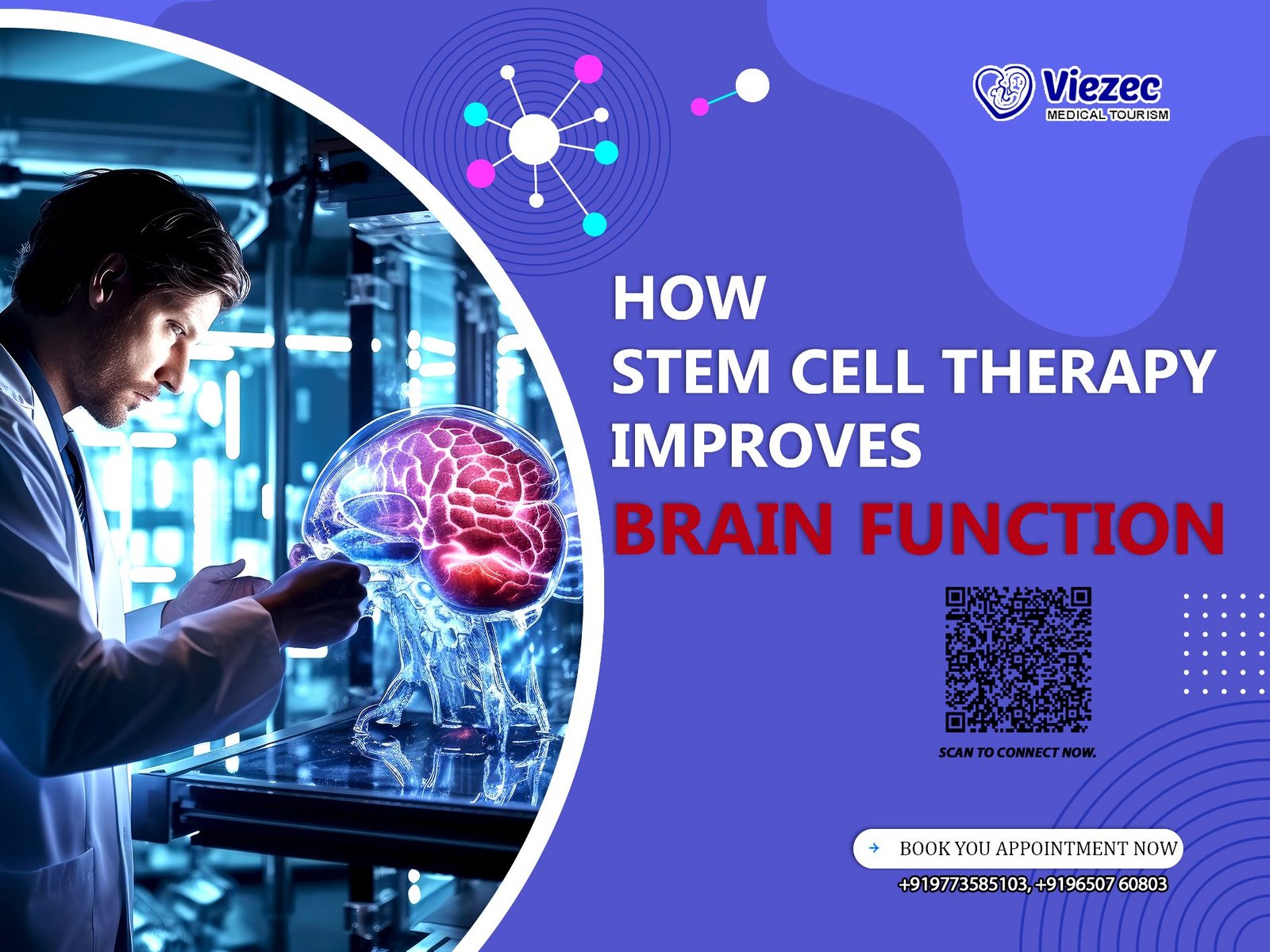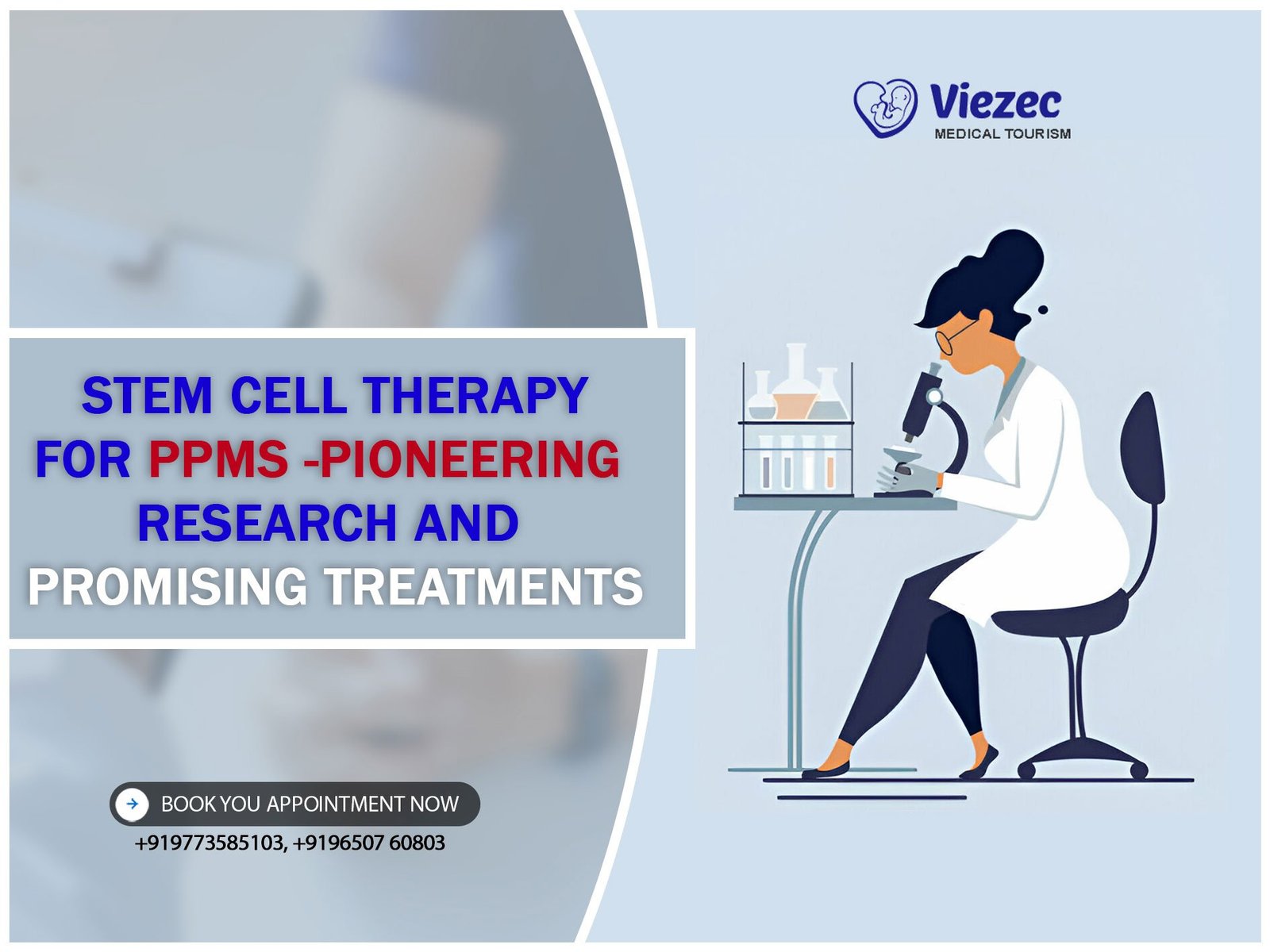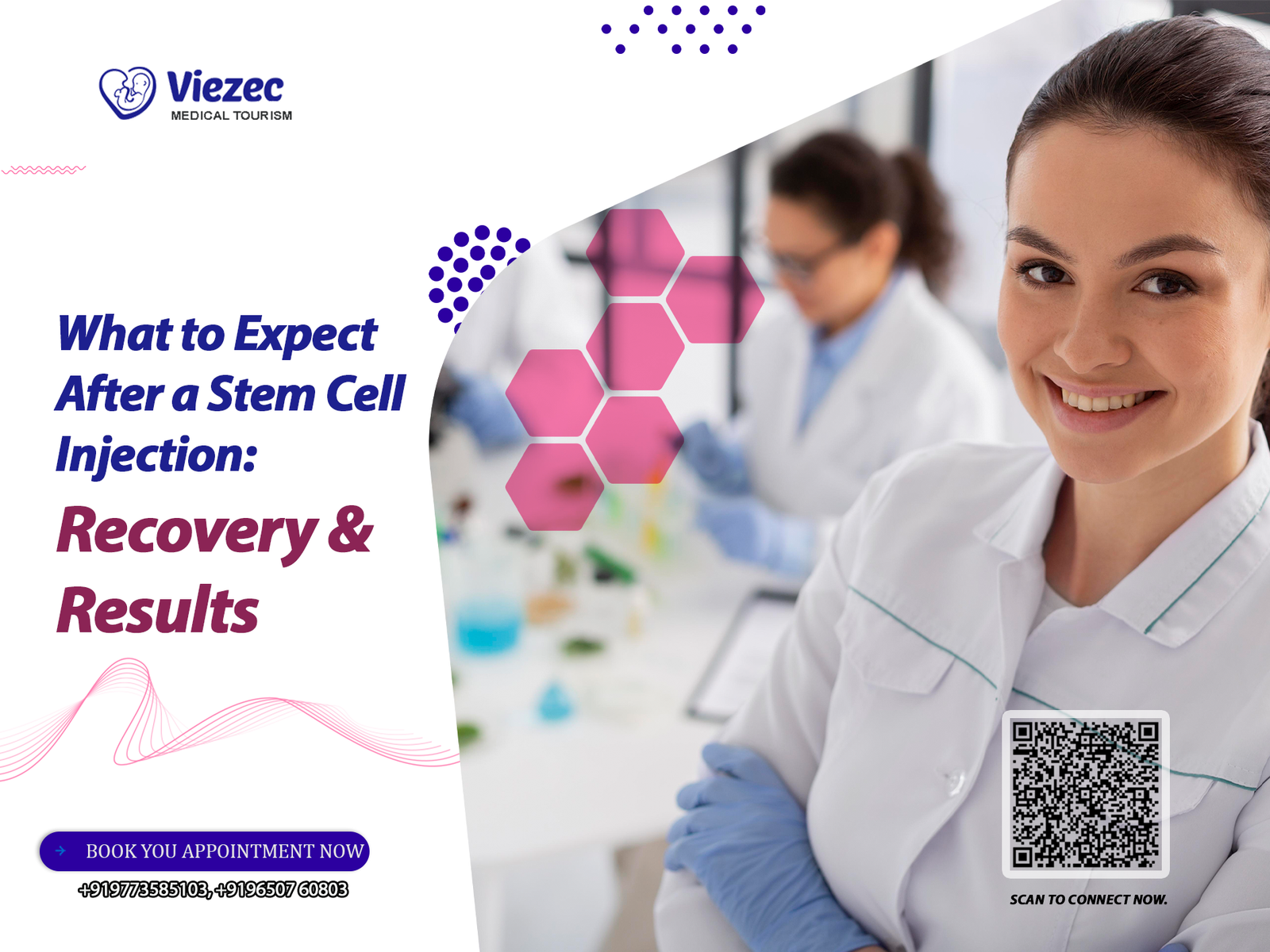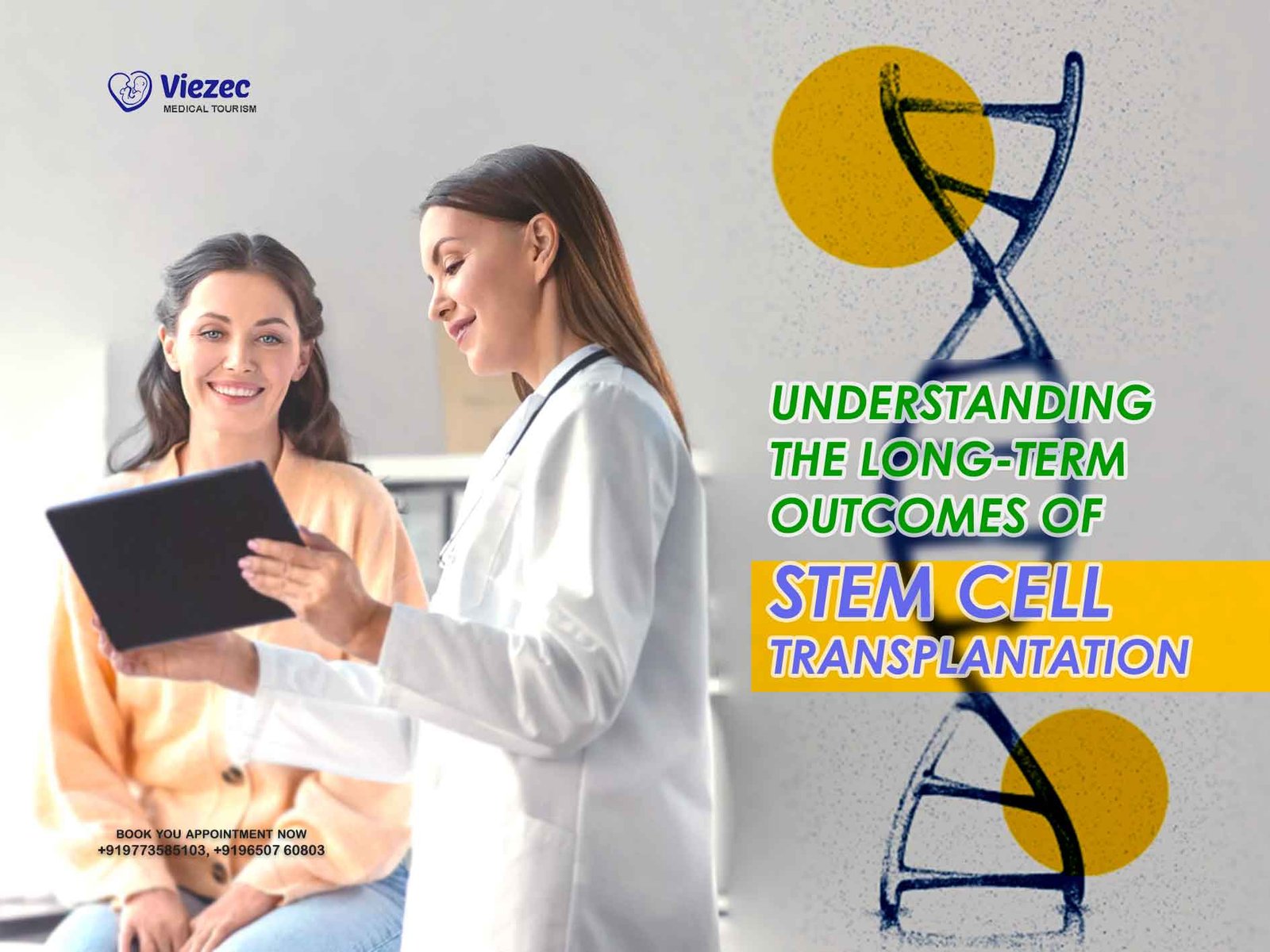Stem cell therapy is opening new frontiers in the treatment of brain-related conditions by unlocking the body’s natural ability to heal itself. These powerful cells can regenerate damaged neurons, improve communication between brain cells, and reduce harmful inflammation. Whether it’s helping patients recover from a traumatic brain injury, stroke, or neurodegenerative disorders like Alzheimer’s and Parkinson’s, stem cell therapy is showing promising results in restoring function and enhancing quality of life. With continued research and accessible treatment options in places like India—through trusted providers such as Viezec—the future of brain repair is more hopeful than ever.
Understanding the Basics
What Are Stem Cells?
Stem cells are the body’s natural building blocks. Unlike regular cells, they have the incredible ability to develop into many different cell types—like neurons, muscle fibers, or blood cells. Even more impressive? They can renew themselves through countless cycles of division, which is why they play such a key role in healing and regeneration. This makes them the centerpiece of regenerative medicine, particularly in repairing damaged tissues like those in the brain.
Types of Stem Cells Used in Brain Therapy
Neural Stem Cells (NSCs)
Neural stem cells are found in the brain and spinal cord. They’re specialists when it comes to the nervous system and can become three major types of brain cells: neurons (which transmit signals), astrocytes (which support neurons), and oligodendrocytes (which form protective sheaths around nerve fibers). In therapy, NSCs don’t just replace damaged cells—they also release helpful molecules that support the surrounding tissue and stimulate the brain’s own repair processes.
Mesenchymal Stem Cells (MSCs)
MSCs come from bone marrow, fat tissue, or umbilical cords. While they don’t normally exist in the brain, they’re often used in neurological therapy because of their powerful anti-inflammatory and immune-regulating abilities. These stem cells release growth factors and proteins that promote healing and reduce inflammation—essential actions for helping damaged brain tissue recover and thrive.
The Brain’s Ability to Heal Itself
Although the brain was once thought to be incapable of regeneration, we now know it has some capacity for self-repair—particularly in the hippocampus, an area linked to memory and learning. However, this ability declines with age, injury, or disease. That’s where stem cell therapy comes in: it enhances the brain’s natural healing process by introducing cells that can reignite repair, support new growth, and even form new neural connections.
Questions About Stem Cell Therapy?
Our experts are ready to guide you toward better brain function and overall health.
How Stem Cells Enhance Brain Function
Stimulating Neuron Regeneration
One of the most exciting capabilities of stem cells is their ability to transform into neurons—the brain’s messaging cells. When introduced into the body, certain types of stem cells can migrate to injured areas, mature into functional neurons, and integrate into existing neural networks. This opens up the potential to restore lost functions in people with brain injuries or degenerative conditions. It’s like jumpstarting the brain’s internal repair system with fresh, ready-to-work components.
Improving Synaptic Plasticity
Synaptic plasticity refers to the brain’s remarkable ability to adapt, form new connections, and reorganize neural pathways. This is the foundation of learning and memory. Stem cell therapy can enhance this plasticity by not only encouraging new neuron growth but also by strengthening communication between brain cells. The result? Improved cognitive performance, quicker mental recovery, and in some cases, regained skills that were thought to be lost.
Reducing Inflammation in Brain Tissue
Inflammation is a common and harmful consequence of brain trauma, stroke, and neurodegenerative diseases. It disrupts normal brain function and can worsen existing damage. Stem cells—especially MSCs—act like natural anti-inflammatory agents. They release cytokines and growth factors that reduce swelling, calm immune responses, and create a more favorable environment for healing. This makes them invaluable in slowing down disease progression and improving quality of life.
Enhancing Blood Flow and Nutrient Supply
For the brain to repair itself, it needs a steady supply of oxygen and nutrients. Stem cells help by promoting angiogenesis—the growth of new blood vessels. This improves circulation in damaged areas, boosts metabolic support to recovering tissues, and accelerates regeneration. With better blood flow comes better healing, sharper brain function, and a stronger foundation for long-term recovery.
Boost Your Brain Health with Stem Cell Therapy
Discover how advanced regenerative treatments can support better cognitive function. Book your consultation today!
Neurological Conditions Benefiting from Stem Cell Therapy
Stem cell therapy isn’t just about hope—it’s about real possibilities for people living with chronic and debilitating brain conditions. From neurodegenerative disorders to traumatic injuries, researchers and clinicians are uncovering how stem cells can restore function, slow progression, and even reverse some symptoms.
Alzheimer’s Disease
Alzheimer’s is a progressive condition marked by memory loss, confusion, and cognitive decline. One of the key biological features of the disease is the buildup of amyloid plaques and tau tangles that disrupt communication between neurons.
How Stem Cells Target Plaque Buildup
Stem cell therapy aims to counter these destructive effects by introducing cells that not only support neuronal survival but also help clear harmful plaques. Some studies suggest stem cells may secrete enzymes that break down amyloid proteins, while also releasing neuroprotective factors that nurture existing neurons and potentially improve memory in early stages of the disease.
Parkinson’s Disease
Parkinson’s is a movement disorder caused by the degeneration of dopamine-producing neurons in a part of the brain called the substantia nigra. This leads to tremors, stiffness, and slowed movements.
Replacing Lost Dopaminergic Neurons
Stem cells can be guided to become dopaminergic neurons, effectively replacing those lost to the disease. Once integrated into the brain, these cells can start producing dopamine again, improving motor control and potentially reducing dependence on medications. This targeted replacement therapy is one of the most promising frontiers in Parkinson’s treatment.
Traumatic Brain Injury (TBI)
TBI occurs when a sudden blow or jolt damages brain tissue. Depending on the severity, it can impair memory, movement, speech, and personality.
Rebuilding Damaged Neural Networks
Stem cells offer a pathway to healing by regenerating injured neurons and supporting the reformation of neural circuits disrupted by trauma. They also reduce inflammation and limit secondary damage—two key factors in achieving meaningful recovery after a TBI.
Stroke and Ischemic Brain Damage
A stroke happens when blood flow to a part of the brain is blocked, causing cells to die from lack of oxygen. This can result in paralysis, speech issues, and loss of cognitive function.
Accelerating Functional Recovery
After a stroke, stem cell therapy helps jumpstart the brain’s recovery by promoting the formation of new blood vessels, replacing damaged neurons, and reducing inflammation. Many patients who receive stem cell treatments in clinical settings report faster rehabilitation and improved motor and speech function.
Treatment Methods and Procedures
While the science behind stem cell therapy is fascinating, the way it’s delivered is just as important. The method of administration can significantly impact how well the cells reach the brain and how effectively they perform their healing functions. Understanding these procedures helps patients and caregivers make informed decisions.
How Stem Cells Are Administered
Intravenous (IV) Infusion
This is the most common and non-invasive delivery method. Stem cells are introduced directly into the bloodstream, where they naturally migrate toward inflamed or damaged brain areas. IV infusion is easy to perform and safe for most patients, though it may take longer for the cells to reach the central nervous system compared to more direct approaches.
Intrathecal Injection
For more targeted delivery, stem cells can be injected into the cerebrospinal fluid (CSF) that surrounds the brain and spinal cord. This method, called an intrathecal injection, bypasses the blood-brain barrier and delivers stem cells more directly to the central nervous system. It’s often used in cases involving neurological conditions where rapid and localized action is needed.
Safety and Monitoring Protocols
Stem cell therapy is considered safe when performed by trained professionals in regulated clinical settings. Before treatment, patients typically undergo screening to ensure suitability. During and after the procedure, healthcare teams monitor for side effects such as minor headaches, fever, or allergic responses. Although rare, more serious complications like infection or immune rejection are mitigated through sterile technique and careful follow-up.
What’s most promising is that many trials have shown low complication rates—especially when using autologous cells (those taken from the patient’s own body) or well-screened allogeneic sources like umbilical cord tissue.
Ready to Unlock Better Brain Health?
Discover how stem cell therapy can improve cognitive function and vitality.
Stem Cell Treatment for Brain Injury in India
India is emerging as a global leader in regenerative medicine, offering advanced stem cell treatments that are both high-quality and affordable. For patients suffering from traumatic brain injury (TBI) or other neurological damage, India presents a unique opportunity to access cutting-edge care without the overwhelming cost often seen in Western countries.
Viezec Stem Cell Institute: Pioneering Brain Recovery
Viezec Stem Cell Institute, based in India, is one of the leading providers of stem cell therapy for brain-related conditions, including brain injuries, stroke, and neurodegenerative diseases. Known for its ethical practices, world-class infrastructure, and patient-first approach, Viezec offers customized treatment plans using mesenchymal stem cells derived from umbilical cord tissue.
What sets Viezec apart:
-
Multidisciplinary team of neurologists, regenerative medicine specialists, and rehabilitation experts.
-
GMP-certified lab facilities for stem cell processing.
-
Comprehensive post-treatment rehabilitation programs to maximize recovery.
Why Choose India for Brain Injury Stem Cell Therapy?
India’s stem cell ecosystem is rapidly advancing due to supportive regulations, experienced medical professionals, and state-of-the-art clinical infrastructure. Patients from around the world choose India because of:
-
Cost-effective treatments without compromising safety or quality.
-
Access to international standard protocols and certified stem cell laboratories.
-
Minimal wait times and personalized care.
Viezec’s holistic care model combines science and compassion, helping patients regain cognitive and physical function, improve quality of life, and take meaningful steps toward long-term recovery.
Hope Restored Through Innovation
If you or a loved one is facing the aftermath of a brain injury, stem cell therapy in India—especially through providers like Viezec—can offer a fresh start. The combination of affordability, clinical excellence, and supportive care makes it a top destination for patients seeking real progress and renewed hope.









